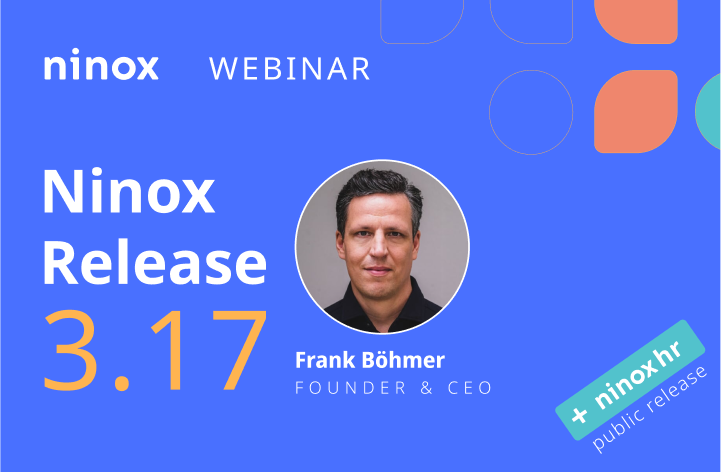Create your own database with these 9 tips

- Tip 1: Define Your Requirements and Capabilities
- Tip 2: Choose the right platform
- Tip 3: Design your database schema carefully
- Tip 4: Don't forget safety measures
- Tip 5: Thoroughly test your database
- Tip 6: Document your database
- Tip 7: Make regular backups
- Tip 8: Monitor and optimize your database
- Tip 9: Stay up to date with the latest technology
A well-designed and efficiently managed database makes the difference between success and failure. But how can companies create their own database that meets their individual requirements and needs?
In this article, we'll give you 9 valuable tips to create your own database while avoiding tripping hazards.
Tip 1: Define Your Requirements and Capabilities
The requirements for having your own database vary from company to company and from sector to sector. Before you start creating your own database yourself, you need to clearly define your requirements and also your capabilities.
Identify exactly What functions and features the software must offer to meet the needs of your company.
At the same time, you should realistically assess your own technical capabilities and resources so that you can successfully complete the implementation. For example, if you want to program your own database yourself, you need IT support.

You can draw on developer know-how both internally and externally. However, calculate the resources you need before you implement. If you don't have an IT team, low-code software will help you. With these solutions, even non-programmers create an individual database.
Tip 2: Choose the right platform
Choosing the right platform is critical to the success of your database. There are plenty of tools and technologies on the market to help you build your own database. From open-source databases like MySQL to NoSQL databases like MongoDB, there's a wide range of options.
When making your decision, consider factors such as scalability, performance, costs, and compatibility with other systems.
With a low-code database like Ninox, you don't have to cut back on any of the factors. A major advantage over other databases is the high usability.
With Ninox, even laymen can develop their own database in no time at all, which is fully adapted to their own needs.
Do you want a create your own online database, we have tips for you elsewhere.
Tip 3: Design your database schema carefully
The database schema is the foundation of your database. A well-thought-out scheme is critical to the efficiency, performance, and reliability of your database. Therefore, take enough time to carefully prepare your database schema.
If you want to get started right away, Ninox offers you the option of a Wide range of templates fall back. With just one mouse click, you can create your own database for the selected area.

For example, Ninox offers templates for personnel management, administration, ERP, CRM and even individual templates for the construction and real estate industries.
Tip 4: Don't forget safety measures
The security of your database is paramount. So implement robust security measures from the start to protect your data from unauthorized access, data loss, and other threats. This includes the use of encryption, access controls, regular security reviews, and other best security practices.
With Ninox, you don't have to worry about security when you create your own database. Our low-code platform is compliant with data protection. All servers are located in Germany in ISO 27001 certified data centers. Thanks to TLS encryption, data exchange between online database and server meets the highest security standards.
Tip 5: Thoroughly test your database
Perform comprehensive testing before adding your database to business processes. Make sure that your own database meets all requirements, works flawlessly, and is secure. Perform functional, performance, and safety tests until it is fully optimized.

Tip 6: Document your database
Thorough documentation is essential for successful database development and maintenance. Document your database schema, data structures, business logic, security policies, and other important aspects of your database.
Good documentation makes it easy for other developers to understand and use your database. It is therefore an indispensable tool for troubleshooting and maintenance.
The Ninox documentation shows you step by step how to create your own database yourself. The area is divided into general basics for beginners, advanced and professionals. With our guide, it is possible for programmers and non-programmers alike to create a tailor-made application for their company.
Tip 7: Make regular backups
Backups are an essential security measure to protect your data from data loss. Perform regular full and incremental backups of your database and store it somewhere safe. Make sure your backup strategy is robust and that you can quickly access your data in the event of an emergency.
In Ninox, automatic backups are created as you use it. In addition, you can create and download manual backups. Data-at-rest encryption ensures that backups are secured at different data center locations. With this method, Ninox ensures disaster recovery.

Tip 8: Monitor and optimize your database
Monitoring and optimizing your own database is a continuous process. Implement monitoring tools to monitor database performance and identify potential issues early on. Perform regular performance improvements to identify bottlenecks and optimize your database for maximum performance.
Tip 9: Stay up to date with the latest technology
Technology is constantly evolving, and your database should keep pace too. Keep up to date with the latest developments and trends in database technology and regularly check what new features or technologies are available.
Invest in continuing education for your employees and take part in trainings and conferences to constantly expand your knowledge.
With Ninox, your database is always up to date. Updates are carried out automatically. In the news section, you can always find out what new features and improvements have been made. You benefit from a team that is fully specialized in database services.

Plan for the future
When you create your own database, you should not only consider your organization's current needs, but you should also plan for the future. Take potential growth into account. Make sure your database is flexible and scalable to grow with your organization's needs.
With Ninox, your database always scales with your business growth. The biggest advantage, however, remains flexibility. Make adjustments at any time to tailor your database to your processes.
Conclusion: invest in a tailor-made solution
With these 9 tips, you are well prepared to create and successfully operate your own database. By clearly defining your requirements, choosing the right platform, implementing security measures, and planning for the future, you can create a database that meets your organization's needs. Ninox does a lot of the work for you, so you can focus on achieving your goals.















